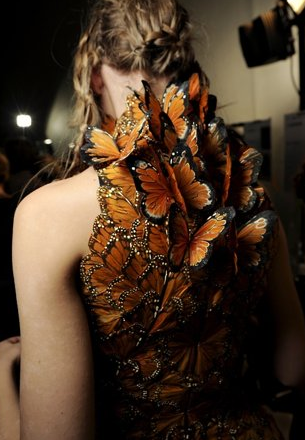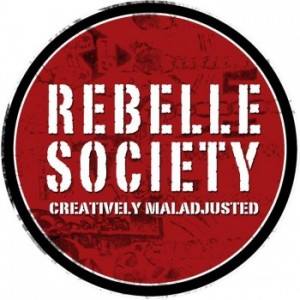Dharma Is… : Curtain Walls, Rothko Paintings, And Butterflies.

{source}
Dharma is one of those million-dollar spiritual words that immediately shift the conversation.
Yoga teachers say it in class. We read it in spiritual texts from Eastern religious traditions. It is even emblazoned on t-shirts and coffee mugs: “Less drama, more dharma.” We know it’s important, but I have a feeling we’re not sure why.
Dharma, as I’ve always understood it, means your deepest life calling, purpose, that singular path — which may take many turns — to which you may devote yourself completely.
It’s often felt like something out there I must discover. How? Spiritual practices, reflection, trial and error. I’m starting to think it’s less a guessing game, less about getting in the right line, at the right time, wearing the right clothes and posture, and more about responding to the now with an awareness of your gifts.
Is there a difference? Yes, one implies everything is preordained, predetermined, and I’m just hoping to get it right; the other is more co-creative with self, others, the Universe — it has more magic.
The magic is in the word itself. In his book Poised for Grace, Dr. Douglas Brooks explains the etymology of Dharma: “from the verbal root / dhr, which means to make firm and to nurture and sustain.” The word suggests a protective boundary, a strong curtain wall around one’s inner castle.
In Hinduism, “dharma is the religious and moral law governing individual conduct and is one of the four ends of life,” and the Buddhists say, dharma is “universal truths common to all individuals at all times” (Encyclopedia Britannica).
Dharma may be translated as protection. From what, one might ask? The pain and suffering of the world? The dark void of ambiguity outside of rules or borders? I see the appeal in that.
I grew up in the South, and went to church every Sunday… and Wednesday. I kept copious prayer lists, sang on the worship team, led bible studies, and talked to Jesus like he was my BFF. I liked living with a rule book.
While I was in high school, my parent’s marriage crumbled under financial stress. As a straight-A, competitive figure skater constantly stalked by the hungry ghost of an eating disorder, I struggled with perfectionism and acceptance. Church was smiling faces, open arms, and cozy couches.
I couldn’t control much in my life, but I knew where the religious borders were and stayed within them. It felt safe.
Until it wasn’t.
At 17, I attended Cornerstone, a Christian music festival outside Bushnell, IL. On the Fourth of July, I, along with hundreds of other tattooed, sweaty, self-proclaimed Jesus Freaks, danced to the chorus of horns pumping out ska music. In their enthusiasm, the band members tossed free CDs to eager reaching hands. One struck my eye.
Six months later — after 42 stitches, multiple surgeries, many prayer requests and tin-foiled casseroles — I had surgery to remove my eye.
I’ve seen differently ever since. The curtain wall fell.
When I lost my eye, I lost my confidence and my safety net of religious faith. Not immediately, but eventually. Over the next decade, I married, went to graduate school, and studied modern dance; I lost beliefs and found parts of my soul in used bookstores. I lived in dilapidated, elegant Victorian homes in Arkansas and Indiana.
I made mistakes. I wrote poems. I watched snow melt to spring from tall windows. I practiced Yoga. In time I regained a spiritual resilience that doesn’t have a name, but a feeling…
When I stand alone on a hillcrest, watching the sun burn itself to sleep, and feel connection to something larger than my own story; when I breathe in Child’s Pose listening to Jeff Buckley’s Hallelujah in my bedroom the night before yet another eye surgery; when I sit on the gallery floor in front of a blue-black Rothko painting that puts everything — even for only a fleeting breath — into perspective; when I hold my lover’s hand at the lip of the ocean, cradle a newborn on my chest in the bath, massage my dying grandmother’s hands with lotion; when I see the crack of light on the forest floor, and I have that “deep feeling that the world has spiritual value” (Dr. Douglas Brooks), I’m tapping into something more of dharma.
In his Yoga Journal article, Teaching Dharma, Aadil Palkhivala says, “When the soul descends into a body, it has a reason for doing so. It is this purpose — this mission of the spirit — that is our individual and unique dharma, be it grandiose or humble.”
Who am I? Why am I here? Will answering these questions lead me to my dharma? Does anyone really know the answers?
From my studio apartment in California, I took an online Yoga class with Marc Holzman.
He shared his story about wearing many different professional hats — from stand-up comic to massage therapist to soap opera actor, moving from New York to LA, finding Yoga, having open-heart surgery, traveling to France to teach Yoga, and returning to LA where he is now: open-hearted, sharing Yoga.
With fiery compassion, he encouraged us to actively quest for our dharma.
Sitting in Virasana, hands on my heart, eyes closed, I saw my dharma in the most unlikely place: picture a world inside an eye.
Mine is prosthetic. It’s the size of a quarter, weight of a buckeye nut; its surface, smooth as blown glass. Red threads make veins. Flecks of gold reflect a green iris encircling the infinity dot of a pupil. Inside are childhood fears of abandonment, teenage dramas of rejection, adult realities of broken hearts and body parts.
And magic: glimmer of fireflies under willow trees, steam rising off the White River on my father’s birthday, roar of a Maui waterfall where I floated the first time, glint of a diamond ring put on and later taken off, soft pink of my niece resting on my chest as we bathed, a strong hand at the back of my heart lifting me up, over waves, her voice when she says, Thank you, thank you, my feet carving the words I love you in the sand.
My dharma is a wound and a healing.
It has taken many forms:
“I am a thin, straight-A, competitive figure skater who wins the approval of her father.”
“I am the girl with the eye-patch — afraid of what’s underneath.”
“I am a broken person who loves other broken people.”
“I am a Christian woman, devoted to my husband. We have Jesus tattoos.”
“I am an emotional poet… no one understands me, but please try. I just want to be seen.”
“I am a teacher of Yoga and writing who wants to inspire embodiment, creative expression, and self-love. Oh, and I want to get married again.”
The evolving answers are the dharma, piece by piece, shaping a life of choices, boundaries, transgressions, revisions, and new iterations. Dharma isn’t an object I hold in meditation, a destination I swim toward, or a static state of conditions. It’s dynamic.
It’s more like holding a rose quartz of self-love as I swim over waves and float a while in the warm Atlantic on my way to teach Yoga while composing poems in my head and tending the butterflies in my stomach because later I’m going to see my man who loves me for my im/perfect Yoga, eye, and southern drawl (when I drink margaritas).
It may not sound spiritual, but it feels more real.
Dharma is “no single translation.”
Whenever I see those beautiful butterflies in collections straight-pinned to a board, their indigo wings stretched taut in illusory flight, I want to unpin them. I believe their beauty would reanimate and make flight possible. Perhaps that’s the gift of dharma. It cannot be pinned down. It is not one thing.
It will keep unfolding its wings, asking for us to look, asking us to fly in ways only unique to us.
Dharma is more than rules and regulations; it is both big-picture (universal truths) and micro-story (individual purpose). It’s an earth’s-core impulse toward your greatest offering to the world — and it may stem from your deepest wound.
Who am I? Who am I today? Why am I here? What gifts, inclinations, talents, and essence might I offer in service to the highest good of myself and others?
The answer, my friends, will take a lifetime to discover and rediscover, and that is your dharma.
***
Leslie St. John is a poet-yogi who uses words and the body to inspire creative expression, physical health, and more self-love. She is the creator of ‘Prose and Poses’, a practice of Yoga and writing to open creative channels, and offers workshops and retreats along the central coast. She received her MFA from Purdue University, where she served as poetry editor for the Sycamore Review. She is the author of ‘Beauty Like a Rope’, a chapbook by Word Palace Press. Her poems have appeared in Teach.Yoga, Apersus Quartery, Cimarron Review, Crab Orchard Review, Florida Review, Indiana Review, Oxford American, Pinch, and Verse Daily. A 300-hr RYT, she has studied with Tias Little, Noah Maze, and Rocky Heron. She teaches Writing, Romanticism, and Poetry at Cal Poly, where she facilitated the publication of ‘Unveiling Self: A Collection of Student Memoirs’. You can find her writing at a café, hunting vintage shops, or hiking with her dog in San Luis Obispo, CA. You could contact Leslie via her website or Instagram.
***
{Join us on Facebook, Twitter & Instagram}

